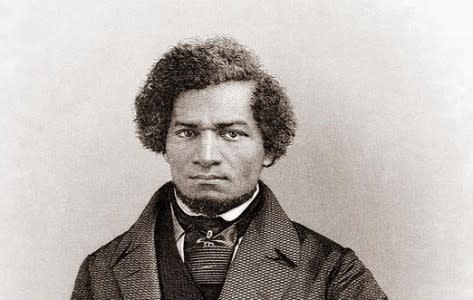The other side of the Fourth of July
The Fourth of July offers us the chance to have a huge birthday party for our nation and to feel more patriotic than usual. We can celebrate the freedoms and liberties given to us by our Founding Fathers and cheer our democracy.
But the Fourth of July was not always a cause for celebration for all people living in America. Frederick Douglass delivered a speech to the Ladies of the Rochester Anti-Slavery Sewing Society on July 5, 1852, in Rochester, New York. He reminded them that the Fourth of July was a day of hypocrisy and cruel injustice for the nation’s slaves as they were forced to celebrate a freedom that did not apply to them.
What to the Slave is the Fourth of July?
While we typically think of the Fourth of July as a happy celebration of our Founding Fathers and the Declaration of Independence, Douglass argued that “this Fourth [of] July is yours, not mine.” As a former slave, Douglass had not gained the freedom that white Americans had gained in 1776. Slavery was a difficult issue that threatened to destroy the fragile new republic. The Founding Fathers decided not to directly address the issue. Left it under the control of the states when the Constitution was written, slavery continued to be practiced. Douglass rhetorically asked,
“What, to the American slave, is your Fourth of July? I answer: a day that reveals to him, more than all the other days in the year, the gross injustice and cruelty to which he is the constant victim. To him, your celebration is a sham…”
While Douglass acknowledged the Founding Fathers for their revolutionary efforts, he reiterated the fact that the Fourth of July was not a holiday of liberty for the American slaves. In fact, Douglass pointed out that some of the Founding Fathers owned slaves at the same time they were declaring their own independence.
The President’s House: Freedom and Slavery
The President’s House site on Market Street in Philadelphia echoes the sentiments of Frederick Douglass’ 1852 speech. While serving as the first president of the United States, George Washington lived in Philadelphia, which was the temporary capital. The President’s House site has been recreated to depict the daily lives of those living in the home, including his many slaves.
What must it have been like for them to serve the father of the republican nation only steps away from Independence Hall while they were still enslaved? The lives of Washington’s slaves are depicted in a new exhibit, The President’s House: Their Untold Stories in Quilts, which will be displayed in Posterity Hall at the National Constitution Center as a stimulus for discussion regarding slavery and freedom within our democracy. The exhibition complements the Center’s summer feature exhibition, Discover the Real George Washington: New Views from Mount Vernon.
As you celebrate the Fourth of July, take time to consider the full history of our nation. What does the holiday mean to you? Consider the words of Frederick Douglass and make this Fourth of July your holiday, celebrating that all Americans can enjoy the liberties and freedoms of this democracy.
Rachel Bradshaw was an education intern at the National Constitution Center.
Editor’s note: This story first ran on July 4, 2011.


